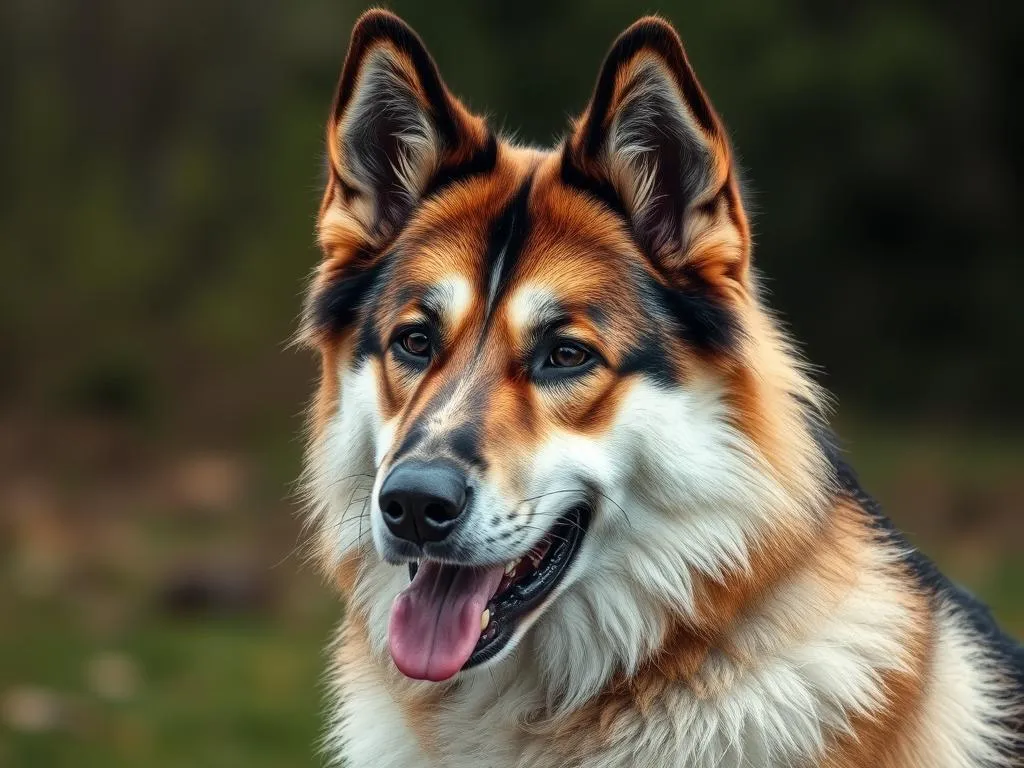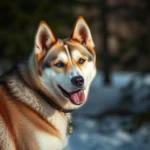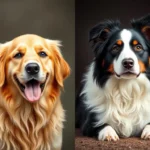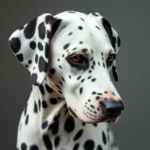
Introduction
Dog breeds are more than just classifications; they encompass a rich tapestry of history, purpose, and companionship. Among these breeds, the Akita Shepherd stands out as a remarkable mixed breed, combining the strength of the Akita with the intelligence of the German Shepherd. Understanding the characteristics of the Akita Shepherd is essential for potential dog owners, as it ensures that they can meet the needs of this unique canine companion.
Understanding Dog Breeds
Definition of a Dog Breed
A dog breed is defined as a specific group of domestic dogs with distinct characteristics, including appearance, behavior, and temperament. These traits are often influenced by genetics and the environment in which the dog is raised. Understanding breed characteristics is crucial for predicting behavior, health issues, and care requirements, making it easier for owners to provide the best possible environment for their pets.
Importance of Mixed Breeds
Mixed breeds, such as the Akita Shepherd, often enjoy several advantages over purebreds. One key benefit is hybrid vigor, which refers to the increased health and vitality seen in mixed-breed dogs. This genetic diversity can lead to fewer inherited health problems, making them more resilient overall. Moreover, mixed breeds can exhibit a blend of traits from both parent breeds, offering unique personalities and capabilities.
The Akita Shepherd
Breed Origin
The Akita Shepherd is a hybrid breed that combines the majestic Akita with the intelligent German Shepherd. The Akita, originating from Japan, was initially bred for hunting large game and has a rich cultural significance. In contrast, the German Shepherd, developed in Germany, was designed for herding and protection. The combination of these two powerful breeds results in a dog that is not only strong and loyal but also intelligent and trainable.
Physical Characteristics
Size and Weight
The Akita Shepherd is a large dog, typically standing between 24 to 28 inches tall at the shoulder and weighing between 75 to 120 pounds. This places them within the same size range as their parent breeds, making them suitable for families with space for a larger dog. Their size and stature convey strength and confidence, attributes that are often associated with both the Akita and the German Shepherd.
Coat and Color
The coat of an Akita Shepherd can vary significantly, depending on which parent breed’s traits are more dominant. They can have short, medium, or long coats, often dense and double-layered. Common color patterns include brindle, black, fawn, and white, resembling the Akita’s diverse color palette. Grooming needs will vary based on coat length, with longer coats requiring more maintenance to prevent matting.
Distinctive Features
One of the most distinctive features of the Akita Shepherd is its strong, muscular build paired with a noble appearance. They often have a broad head, erect ears, and expressive eyes that convey intelligence and alertness. This mix gives them a unique look that is both intimidating and friendly, making them excellent companions and protectors.
Temperament and Behavior
General Temperament
The Akita Shepherd typically exhibits a balanced temperament, combining the protective nature of the Akita with the intelligence and loyalty of the German Shepherd. They are known for being confident, courageous, and devoted to their families. However, they can also exhibit a stubborn streak, making early training and socialization crucial.
Socialization Needs
Early socialization is vital for the Akita Shepherd. Exposure to various people, environments, and other animals helps them develop into well-adjusted adults. Without proper socialization, they may become overly protective or reserved around strangers. Engaging in puppy classes, playdates, and supervised outings can significantly benefit their social skills.
Training Requirements
Training an Akita Shepherd requires patience and consistency. Positive reinforcement methods work best, as they respond well to rewards such as treats and praise. Due to their strong-willed nature, it’s essential to establish a firm but gentle leadership style. Basic obedience training should be a priority, followed by more advanced commands and tricks to keep their minds engaged.
Health Considerations
Common Health Issues
Mixed breeds like the Akita Shepherd can inherit health issues from both parent breeds. Common concerns include hip dysplasia, elbow dysplasia, and certain autoimmune disorders. Regular health screenings and early intervention can help manage these risks effectively. It’s essential for owners to be aware of these potential issues to provide appropriate care.
Preventative Care
Preventative care is crucial for the long-term health of an Akita Shepherd. Regular veterinary check-ups, vaccinations, and a balanced diet are vital components. Owners should also be proactive about dental care and parasite prevention, as these factors play a significant role in maintaining overall health.
Lifespan
The average lifespan of an Akita Shepherd ranges between 10 to 15 years. Factors influencing longevity include genetics, diet, exercise, and overall care. Regular vet visits and a healthy lifestyle can contribute to a longer, happier life for these magnificent dogs.
Living with an Akita Shepherd
Ideal Living Conditions
Akita Shepherds thrive in environments where they have space to roam and exercise. While they can adapt to urban living, they do best in homes with large yards or access to open areas for daily exercise. Regular physical activity is crucial to keep them healthy and prevent boredom, which can lead to destructive behaviors.
Family Compatibility
The Akita Shepherd can make an excellent family pet, particularly in families with older children. They are typically gentle and protective, forming strong bonds with their families. However, supervision is essential when introducing them to younger children and other pets, as their protective instincts can sometimes lead to overzealous guarding.
Grooming Needs
Grooming requirements for the Akita Shepherd depend on the coat type. Generally, they require brushing at least once a week, with more frequent grooming for longer coats, especially during shedding seasons. Essential tools include a slicker brush, comb, and deshedding tools. Regular grooming not only keeps their coat healthy but also offers an opportunity for bonding between dog and owner.
Conclusion
The Akita Shepherd is a unique and captivating breed that embodies the best traits of both the Akita and the German Shepherd. With their striking appearance, loyal nature, and intelligent demeanor, they make wonderful companions for the right families. Understanding their characteristics, needs, and care requirements is essential for responsible ownership. By providing a loving home, proper training, and regular health care, potential owners can ensure their Akita Shepherd will thrive and bring joy to their lives for many years to come.









